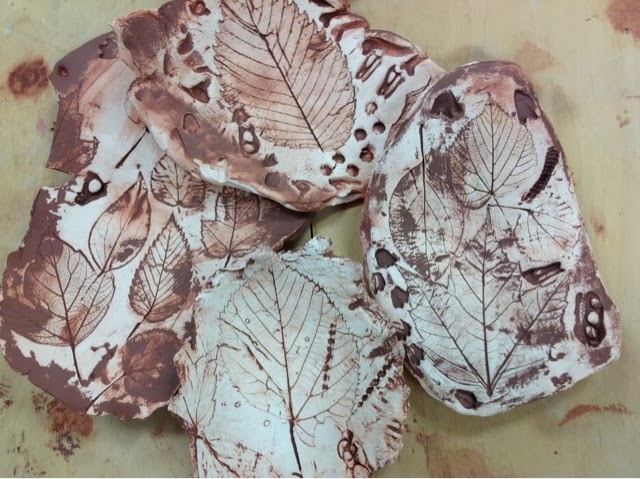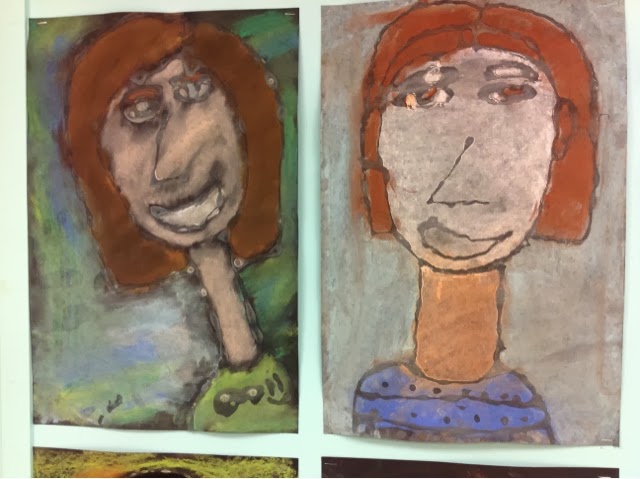Tuesday, November 19, 2013
Kinder clay fossils
Kindergarten artists learned about fossils. We read several books and talked about how we can learn from fossils. They have plants and animals in them that may not exist anymore. We also learned about how people have been using clay to create functional artwork for thousands of years. To create our clay "fossils", we used rolling pins to roll out clay slabs. Then we used real leaves to add to texture and print the leaves into the clay. We also added texture by printing with toy dinosaurs to create footprints and skeleton shapes into our clay. After the clay was dried and fired, we painted them brown and then used old sponges and water to scrub off most of the paint, but leaving painting in the deep textured areas, so that our fossils were emphasized.

Monday, November 18, 2013
Surreal self portraits
Giuseppe Arcimboldo was an Italian renaissance painter known for his surreal portraits of nobility. His portraits are constructed entirely out of common objects--fruits, vegetables, animals or books. 5th graders studied his artwork along with the work of surrealist painters Salvador Dali and Rene Magritte. We traced our silhouetted profiles onto poster board and cut them out. Using a collage technique, we collected images from magazines and encyclopedias to create proportional but totally surreal self portraits.
Friday, November 1, 2013
Day of the Dead
Students in various classes created these Dia de Los Muertos sugar skulls. We read a book on Day of the Dead and watched a great short video. As a class we drew the skulls and independently students added their symmetrical designs. We added color and practiced shading using metallic colored pencils. Some students had time to add a pattern onto their black paper frame as well. These examples are from fourth grade.
4th grade op art
4th grade artists looked closely at the artwork of Brigit Riley and Victor Vasarely. They are credited with founding "optical art" or op art. It is artwork that attempts to play on the weaknesses of the human eye. This type of art features 3-d looking imagery, often abstract, on a 2-d surface. We also studied the colorwheel and used complementary colors for added pop and contrast in our images.
Subscribe to:
Posts (Atom)














































